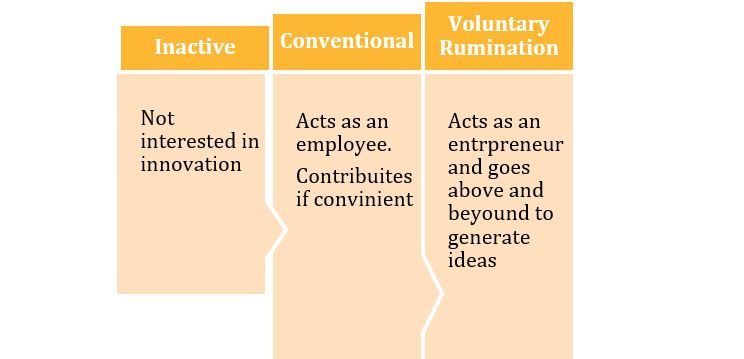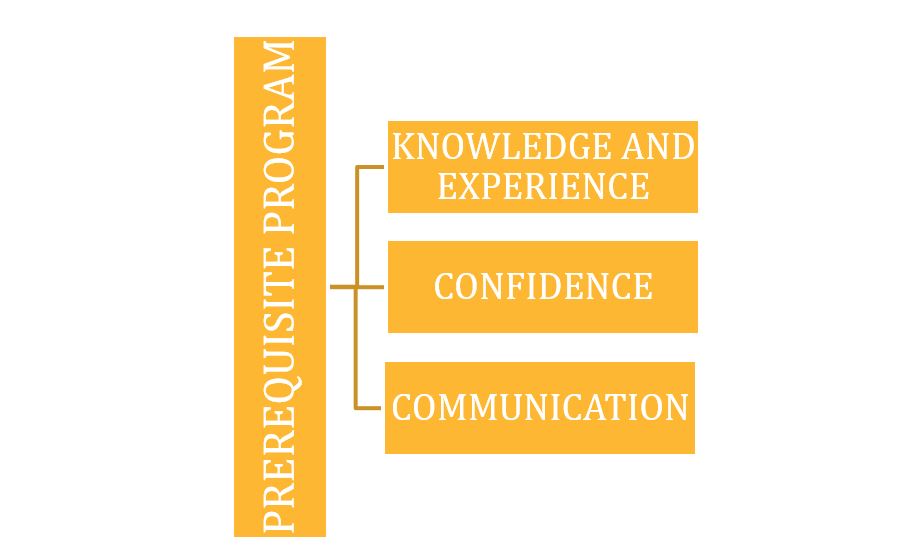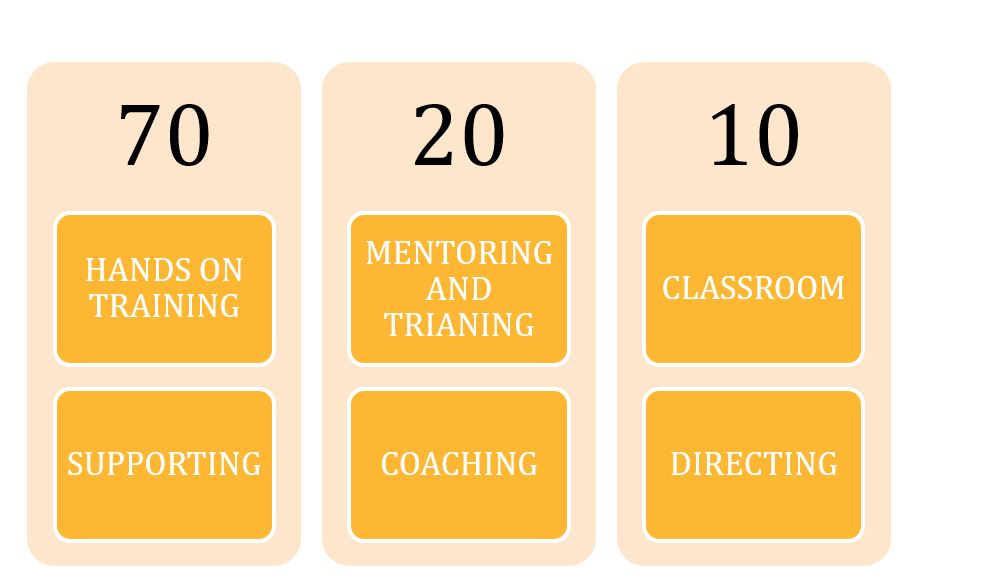By Obozegie Raymond Ekhasomhi, Maintenance Planner, Maple Leaf Foods
June 2021
Innovation is the conception and execution of ideas to improve a process or develop a new product.
Innovation is a core component of process, product, and workforce development. With innovation, what begins as a problem or a business need very often stimulates an innovative idea or hypothesis. Organizations therefore need to foster a culture of innovation amongst employees and equip them for consistency in generating ideas, solving, and preventing problems. The following prerequisites are necessary for progressive organizations to build and sustain an innovative and progressive workforce.
1. Stimulating Culture:
Organizations should provide an encouraging and nurturing environment to accelerate an innovative culture. The goal should be to shape an environment where employees act like entrepreneurs as they go about their daily operations. This results in a concept called voluntary rumination. This is a situation where employees have taken total ownership of their functions that they directly or indirectly seek innovative ideas and/or solutions to a similar problem during work hours and off days. The three stages of employee commitment to innovation are shown below.

The goal is the create a culture which will transform employees who are inactive to active/productive employees and finally to a stage of consistent voluntary rumination. Some key factors that need to be considered include:
A) Reward and recognition
Organizations should constantly ask themselves what they reward. Employees should be rewarded for -
- Volume of innovative ideas,
- Relevance of innovative ideas.
Most reward structures usually make use of lagging indicators such as product output. Leading indicators such as volume and relevance of ideas should be rewarded. This guarantees that employees are more likely to generate ideas to improve processes and create a product. It is also imperative that a structure is created to ensure relevant and cost-effective ideas are implemented.
The culture of rewarding innovation should ideally cut across every identifiable level of innovation, from conception and sharing of ideas, to actual results from individuals and teams. The prevailing internal culture of an organization can limit the level of innovation among its employees.
A good practice is to conduct periodic innovation challenges where a problem statement is shared among participating team members and the team is encouraged to think outside the box to generate ideas. There is usually a prize for the winner as well as the individual with the highest number of ideas. Organizations could tailor this to meet their internal needs and/or solve repetitive problems.
B) Employee engagement
Organizations should strive to ensure that employees are engaged and feel valued. Employees need to know that they have a future with the organization with succession planning and a clear career path.
Consistent feedback is also critical to employee engagement. If an idea or suggestion is dismissed outright without feedback to the generating employee, they are less likely to contribute ideas for innovation in the future.
A good practice would be to assign mentors to employees (especially new hires) to consistently guide and monitor their development with innovation in mind.
2. Adequate facilities and processes:
It is essential for employees to enjoy performing their functions. When equipment and /or processes are not adequate, outdated, or poorly maintained or are in wear out period, where employee assistance to the equipment is extremely high and they spend most of their work time firefighting, it will result in a situation where employees are too exhausted physically and mentally to think of better ways of doing their work.
Poorly executed maintenance strategies will certainly lead to employee frustrations and increase time spent on reactive work with little or no time for innovation.
With working, first-rate facilities, employees are less stressed and better able to think creatively to improve processes.
3. Hire Innovative People:
Creating a culture of innovation in any organization begins with the hiring managers. Identifying creative and innovative individuals for open roles is particularly important. However, a lack of training as well as laid-back working culture can lead to an environment where employees do not attempt to solve problems or increase efficiency in creative ways.
Hiring managers should actively prioritize innovation as well as the capacity to learn and adapt in prospective employees.
Most organizations attempt to foster innovative environments by hiring innovative people or those that exhibit a tendency or potential to think outside the box, training employees on critical thinking, and then providing a challenging work environment where employees are expected to conceive ideas and improve processes.
INNOVATION PREREQUISITE PROGRAM
There are three areas where organizations should attempt to provide training to improve the overall innovation of their workforce. These elements are –
- Knowledge, skills and experience
- Confidence
- Communication
The overall innovative culture improves as each of the elements improve.

4. Knowledge and Experience
It is necessary to understand a process before proposing changes, optimizations, or improvements. Focusing on short-term solutions and quick fixes can cause problems down the line. As an illustration, consider a bottling plant which saved a huge deal of money by reducing the weight of bottles as well as the weight of cap underlay. After initial gains, they started having problems of product losses due to leakages and bottle explosion because the weight of the body could not sustain the temperature profile inside the pasteurizer. This type of failure happens as a result of implementing ideas without considering all pertinent factors.
Most organizations develop training plans for new/old employees with the intention of improving the knowledge levels.
A good practice in innovative training is utilizing the 70-20-10 training methodology. This approach works well with new hires as well as current employees.

Classroom Training:
About 10% of available time should be set aside for classroom training. The purpose of classroom training is to learn or/and keep abreast of the theoretical process, show and analyze relationships between variables, trends, schematics, understanding equipment manuals etc. Most companies have a classroom training data bank where employees are required to take mandatory classroom training online with interactive pop quizzes and tests at the end to check understanding and maximize learning. Classroom training is a continuous and iterative process because it is important to constantly refresh memory on a subject matter and to review new or updated information.
Mentoring:
With mentoring, a high performing employee is asked to provide guidance to a newer/less experienced employee to help improve their performance. This helps the newer employee to learn faster, while giving the more experienced employee an opportunity to clarify and streamline their knowledge to make it easy for others to understand and consume. For mentoring to succeed, the newer employee must be willing to learn, and the older employee must have the required knowledge to teach and an ability to communicate that knowledge.
Hands-on Learning Experience:
During hands-on work activities, the employee has the opportunity to learn while dealing with everyday needs on the job. Knowledge acquired in such situations tends to stick with the employee because it was acquired during practical problem-solving.
It is also good practice to assign projects on the subject matter after classroom training to give employees practical experience.
5. Confidence
Confidence is the belief that a hypothesis or idea is correct or that a chosen path of action is the best or most effective. It is based on knowledge and experience and usually involves a careful consideration of all relevant factors. Arrogance on the other hand involves careless insistence that an idea or path of action is the right one based on nothing but hubris. Knowledge ad experience makes the difference between confidence and arrogance. The more knowledgeable one is in a field, the more confident they will be. It is however possible to be over-confident i.e., to believe in a chosen course of action without adequate research, consultation, and application of existing knowledge, or to follow that course of action even when factors point to a possibility of failure.
Carefully applying knowledge and experience to achieve good results builds confidence in an employee. A good organization must have a system of ensuring that all ideas are analyzed for feasibility before they are implemented.
Some employees within an organization may have ideas to solve certain process challenges but lack the confidence enough to share these ideas.
A good practice would be to engage reticent employee and help to build their confidence.
6. Communication
This element involves positioning an idea for buy-in. This means the idea must be communicated in its simplest form and be clearly understood by all stakeholders.
Many good ideas are ignored or discarded when they are not communicated in the right way. Organizations must develop and provide standard templates for employees where these ideas are documented and expressed in a clear and simple way.
A standard template should contain the following fields -
- Problem statement – what the problem is and why it is a problem.
- Proposed solution.
- Resources required to complete.
- Expected savings or output after completion.
Conclusion
Innovation is crucial for efficient product development and should be promoted in every workforce and organization. Creating a culture of innovation should be considered a key factor in the hiring process, as well as during training and everyday operations. It is important for employees to be given the tools to learn all they can, and also improve their confidence and communication skills in order to develop and successfully present their ideas.